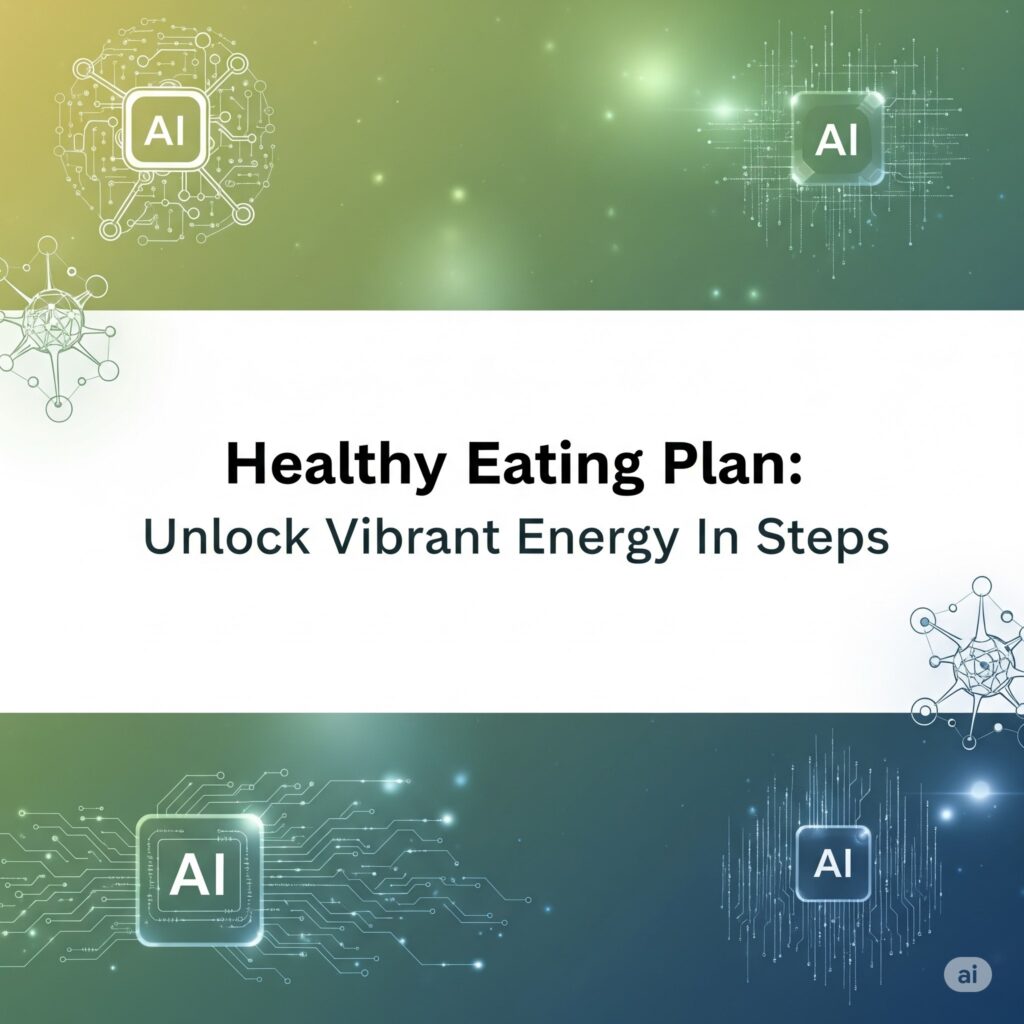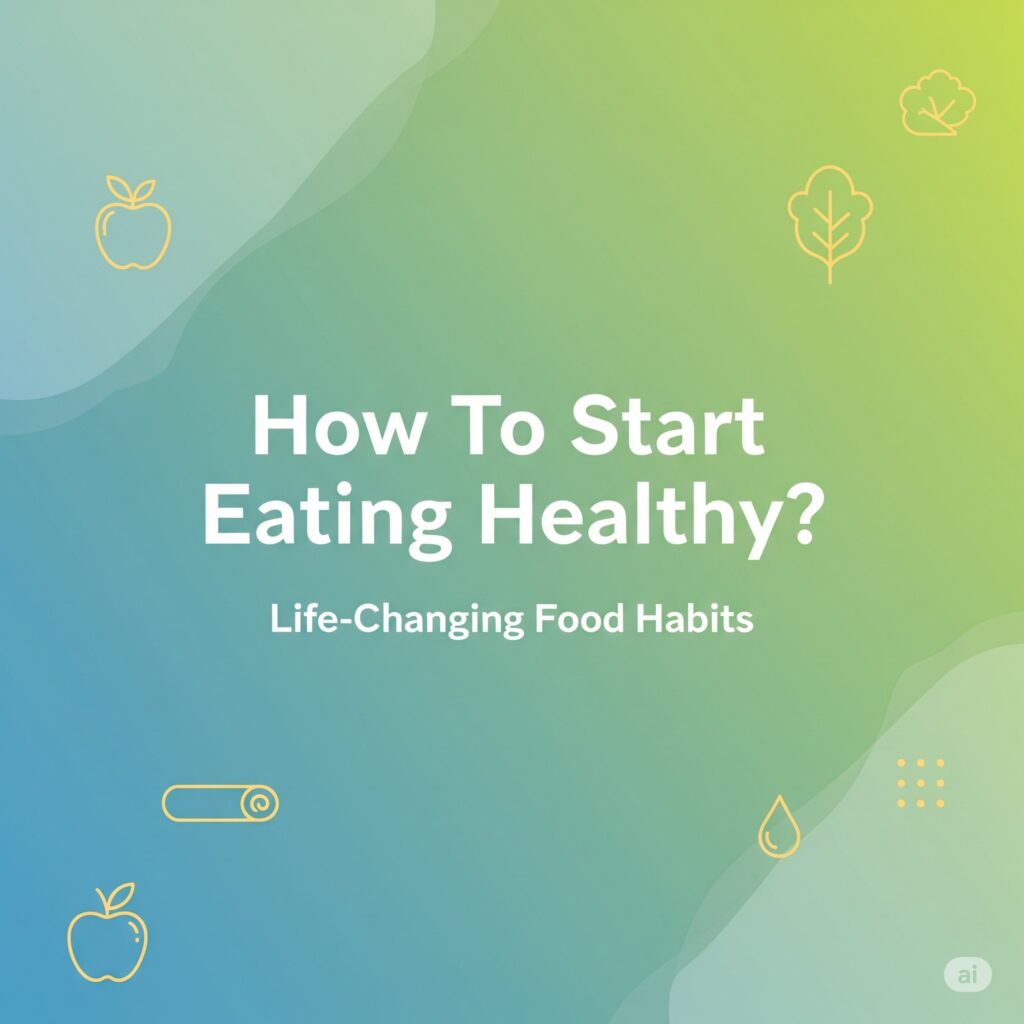Struggling with low energy or focus? A healthy eating plan can boost your overall well-being—without eliminating your favorite foods.
Ever feel tired all day, even after sleeping? Or struggle to focus in class or while studying? The problem might be your food, not your phone.
A healthy eating plan isn’t about dieting or giving up everything you love. It’s a smart way to nourish your body with the right nutrients, so you feel better, think more clearly, and stay active.
This kind of plan includes balanced meals, regular snacks, and better choices—without making things boring. Whether you’re at school, college, or work, a healthy eating plan helps you stay on track without stress.
Food plays a huge role in how your body and brain work. A good healthy eating plan gives you the energy to get through long days, helps your skin look better, and even lifts your mood.
It’s not about eating less. It’s about eating smarter. Let’s break it down and make it easy for your daily life.
Table of contents
- How to build a healthy eating plan with AI apps?
- How to stick to your healthy eating plan daily?
- Create a smart healthy eating plan for school days
- How to start a healthy eating plan with zero stress?
- Plan meals better using a healthy eating plan tracker
- Best tools for tracking your healthy eating plan
- Top fitness wearables for a healthy eating plan
- Smart apps that support your healthy eating plan
- Healthy eating plan vs. random clean eating
- AI tools that personalize your healthy eating plan
- Why a healthy eating plan boosts energy and focus?
- Healthy eating plan for better gut and mood health
- FAQs: Healthy eating plan
- Conclusion
How to build a healthy eating plan with AI apps?
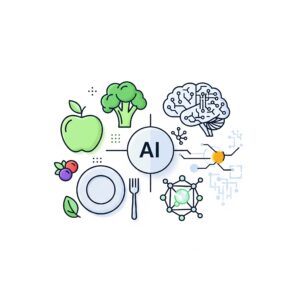
Use tech to make better food choices—without the stress. Planning meals doesn’t have to be confusing anymore. With AI apps, you can easily build a healthy eating plan that fits your goals and schedule. These tools do more than count calories—they learn from your habits and suggest meals that match your lifestyle.
AI helps with food tracking and balance
Most apps give real-time suggestions. They track your nutrition, remind you to eat balanced meals, and even warn you if you’re lacking certain nutrients. That’s a big step toward creating a strong healthy eating plan. Plus, you get instant feedback so you can improve every day.
Personalized suggestions make it easier
AI apps don’t just offer generic diets. They adjust your plan based on your energy levels, mood, or activity. Whether you want to gain strength or feel more energized, a healthy eating plan becomes easier to follow when it feels made just for you.
Small choices, big results
When you consistently follow suggestions from smart apps, your body starts to feel the difference. You eat better without overthinking it. That’s the real power of using AI to build a healthy eating plan—it makes healthy choices part of your daily routine.
With the right app, smart tech becomes your food coach—helping you eat right, feel great, and stay on track without stress.
How to stick to your healthy eating plan daily?
Turn smart food choices into a daily habit. Starting a healthy eating plan is one thing—sticking to it every single day is another. Life gets busy, cravings hit, and routines change. But with a few easy tricks, you can stay on track and make your goals last.
Prep your meals ahead of time
Planning your meals saves time and stops you from grabbing junk food. Prep simple, tasty meals that match your healthy eating plan. Keep snacks like fruit or yogurt handy so you don’t reach for chips.
Use reminders and trackers
Set daily reminders or use an app to log your food. These tools help you see patterns, notice when you slip, and get back on track quickly. They also keep your healthy eating plan front and center, making it easier to follow.
Be kind to yourself
You don’t need to eat perfect every day. One snack won’t ruin your progress. The key is to keep going and adjust when needed. A healthy eating plan works best when it’s flexible and forgiving—not strict or stressful.
With a bit of prep, tech support, and a positive mindset, you can turn your plan into a routine that fits your life.
Create a smart healthy eating plan for school days
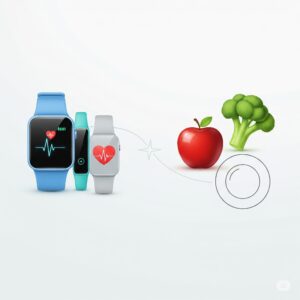
Fuel your brain and body to stay sharp in class. Busy school days can mess with your meals. Between early mornings and packed schedules, it’s easy to skip breakfast or grab fast food. But with a smart healthy eating plan, you can stay full, focused, and energized all day.
Start with a strong breakfast
A good breakfast gives you the power to stay alert in class. Try something easy like eggs, oatmeal, or a smoothie. It’s a quick win for your healthy eating plan and keeps you from getting too hungry later.
Pack simple, healthy snacks
Avoid vending machine snacks by packing your own. Things like fruit, trail mix, or a yogurt cup are easy to bring and super filling. These little choices support your healthy eating plan without any extra stress.
Make lunch count
Your lunch should be balanced—protein, carbs, and veggies. Even a sandwich with a side of carrots or a grain bowl works great. This helps you stick to your healthy eating plan without needing fancy meals.
With just a bit of planning, you can build a routine that fits school life and keeps you feeling your best.
How to start a healthy eating plan with zero stress?
Simple steps to begin without pressure or confusion. Starting something new can feel overwhelming—but it doesn’t have to be. A healthy eating plan should feel doable, not difficult. You just need the right mindset and a few easy habits to make it stick.
Pick one small goal first
Don’t try to change everything in one day. Begin with something simple like eating one fruit a day or switching soda for water. This tiny step still counts toward your healthy eating plan and builds your confidence fast.
Prep meals ahead of time
Meal prep sounds fancy, but it can be as easy as packing snacks or leftovers. Having food ready saves time and keeps you from skipping meals. This is one smart way to keep your healthy eating plan low-stress and on track.
Use helpful tech tools
Apps can suggest recipes, track your meals, or set reminders. These tools take off the pressure of planning. They also make sticking to your healthy eating plan feel more fun and less like a chore.
Stress-free healthy eating is possible when you take it one step at a time and use what works best for you.
Plan meals better using a healthy eating plan tracker
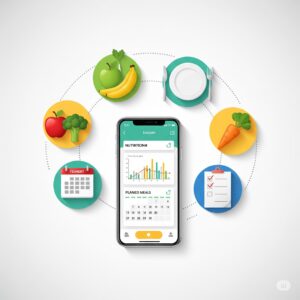
Let tech help you stay on track and stress less. Meal planning doesn’t need to be complicated. With a healthy eating plan tracker, you can organize meals, save time, and avoid last-minute junk food choices. These apps make smart eating feel easy.
Track what you eat in real-time
Using a tracker helps you see what you’re actually eating. You log meals as you go, which keeps you honest. Over time, you’ll spot patterns and improve your healthy eating plan without guessing.
Set simple goals and reminders
Most trackers let you set goals like “3 veggies a day” or “drink more water.” They remind you before meals or bedtime. That’s one less thing to remember while keeping your healthy eating plan strong.
Stay motivated with progress
It’s fun to watch your streaks grow. Many apps show your week’s meals in charts or visuals. You feel proud when you stay on track—and it makes your healthy eating plan something you actually want to follow.
Meal tracking makes eating healthy more consistent and way less stressful. Try it, and planning food will feel more like a win than a chore.
Best tools for tracking your healthy eating plan
Simple apps that make healthy choices easier to follow. Keeping up with a healthy eating plan can feel tricky without the right tools. But with today’s tech, you don’t have to do it alone. Several apps and platforms help you track food, stay organized, and eat smarter—without stress.
MyFitnessPal
This app is great for tracking meals, snacks, and calories. You can even scan barcodes on packaged foods. It shows how your choices fit into your healthy eating plan and helps you stay aware of what you’re eating.
Yazio
If you like visual feedback, Yazio is for you. It gives colorful charts, weekly reports, and easy goal setting. This app helps you stay focused and makes your healthy eating plan feel more like a lifestyle than a task.
Ate App
Ate is different—it’s photo-based. You take pictures of your meals instead of typing them in. This helps you see your habits and reflect without judgment. That’s a big win when sticking to your healthy eating plan feels overwhelming.
Using the right tracking tool makes healthy eating simple, fun, and much more consistent. Choose one that fits your style and start making every meal count.
Top fitness wearables for a healthy eating plan
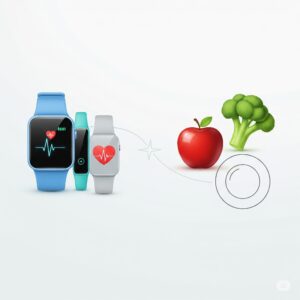
Track your meals and moves with smart tech. A fitness wearable isn’t just for steps—it’s a great sidekick for your healthy eating plan. These gadgets help you stay on track by syncing your movement, meals, and progress in one place.
Fitbit helps track food and exercise
Fitbit wearables do more than count steps. They track your sleep, activity, and what you eat. You can log your meals right in the app, which keeps your healthy eating plan organized and easy to follow. It even sends reminders so you don’t forget your goals.
Apple Watch connects food and fitness
The Apple Watch works well with nutrition apps like MyFitnessPal. You can set calorie goals, log snacks, and get updates during the day. When your healthy eating is connected to your wrist, it’s easier to stay consistent—even when school gets busy.
Garmin gives deep insights
Garmin is great for students who enjoy sports or intense workouts. It tracks everything from calories to stress. Paired with a smart food tracking app, it helps you manage your healthy eating plan based on how active you are.
Fitness wearables make your healthy eating feel less like a task and more like a smart routine. When your meals and movement work together, results come faster—and with less stress.
Smart apps that support your healthy eating plan
Make food tracking and planning easier with tech. Smart apps can turn your phone into a helpful food coach. Whether you’re planning meals or tracking snacks, these apps keep your healthy eating plan simple and stress-free.
MyFitnessPal makes tracking easy
MyFitnessPal is one of the best apps for logging your food. You can scan barcodes, set calorie goals, and track your nutrients. It connects well with wearables, so your healthy eating plan stays synced with your movement and sleep too.
Yazio gives personalized plans
Yazio helps you build a healthy eating based on your goals. Want to boost energy or eat less sugar? This app sets a daily guide for you. It shows what to eat and when, so you don’t have to guess.
Lifesum supports smart choices
Lifesum is great if you’re trying to eat clean or follow a specific style, like vegetarian or high-protein. It suggests recipes, tracks macros, and helps you improve your habits over time. It fits right into your healthy eating plan without being too strict.
These smart apps give you the tools to eat better every day. Your healthy eating becomes more fun, more flexible, and way easier to follow when tech does the hard work for you.
Healthy eating plan vs. random clean eating
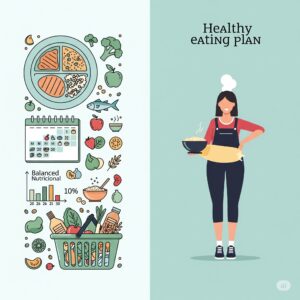
Why structure beats guesswork when it comes to food. It’s easy to say you’re “eating clean”—but without a clear plan, it often turns into confusion. That’s where a healthy eating plan can really make a difference. It gives you structure, balance, and daily direction.
Plans give you goals
With a healthy eating, you know exactly what to eat and why. You get the right portions, food variety, and nutrients. Random clean eating often skips meals or repeats the same foods, which can leave you tired or bored.
You avoid last-minute choices
When you follow a healthy eating plan, you already know what’s for lunch. You don’t grab the first snack you see. Random eating depends on mood, which can lead to junk food or skipping meals.
Results are easier to track
A solid healthy eating lets you track your progress. You see what’s working—more energy, better focus, clearer skin. With random clean eating, you’re guessing and hoping.
Clean eating feels healthy, but real results come when you pair it with a clear plan. It’s not about being perfect—it’s about being prepared.
AI tools that personalize your healthy eating plan
Let smart tech shape meals just right for you. Not everyone’s body is the same, and your meals shouldn’t be either. That’s why AI tools are changing the way we create a healthy eating. These smart tools learn your habits, goals, and even cravings.
How AI makes your meals smarter
AI-powered apps like Lumen, Yazio, or MyFitnessPal track your food intake, energy levels, and personal preferences. Based on that data, they build a healthy eating plan that fits your daily routine. No guesswork—just science-backed meals tailored to you.
Adjusts with your lifestyle
If you’re in school one week and on break the next, your healthy eating can shift with you. These tools notice your activity levels, mood, and energy, then tweak your food suggestions in real time. It’s like having a coach in your pocket.
You stay motivated
Personalized plans feel more doable. They’re built around your favorite foods and updated to match your schedule. That makes it easier to stick to a healthy eating plan long-term—without stress or boredom. With AI by your side, planning meals isn’t just easier—it’s smarter and way more fun.
Why a healthy eating plan boosts energy and focus?
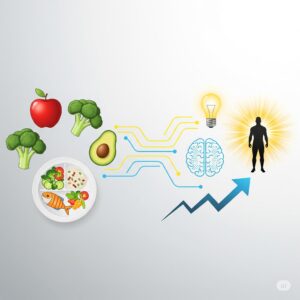
Better meals, sharper mind, more get-up-and-go. Ever feel super sleepy during a class or foggy while doing homework? That’s where a healthy eating plan comes in. The food you eat fuels your brain and body. Eating right can seriously boost your focus and energy.
Nutrients keep your brain alert
When you follow a healthy eating plan, you get the right balance of protein, fiber, healthy fats, and vitamins. These nutrients help your brain stay alert and your body feel active. No sugar crashes. No afternoon yawns. Just steady energy.
Avoid the highs and lows
Random snacking or skipping meals messes with your blood sugar. But a healthy eating spaces out your meals smartly. That means fewer slumps and more consistent energy throughout the day. You’ll find it easier to concentrate—whether you’re in class or studying late.
Food impacts your mood too
Your meals can affect how you feel. When your body gets what it needs, your mind feels clearer and more balanced. A healthy eating helps manage stress and supports a better mood. That makes staying focused and motivated feel much easier.
So, if you’re chasing better energy and sharper thinking, don’t just eat more—eat smart. Let your plate power your day.
Healthy eating plan for better gut and mood health
Feel good from the inside out. A healthy gut means better digestion, stronger immunity, and a happier mind. What you eat directly affects how you feel. That’s why following a simple healthy eating plan can improve both your mood and your gut health. If you’re dealing with stress, tiredness, or even acne, your gut might be the hidden cause.
Start your day with gut-friendly fuel
Breakfast matters. Swap sugary cereals for whole foods. Try oats with yogurt and fruits. These give your gut good bacteria and fiber. A glass of water with lemon helps too. It wakes up your digestive system and keeps you hydrated.
Add color to every meal
Colorful fruits and veggies feed your gut with fiber and vitamins. The more variety, the better. Think carrots, spinach, blueberries, and bell peppers. They’re not just pretty—they’re powerful. Make your plate look like a rainbow at lunch and dinner. This habit keeps your mood more stable throughout the day.
Say yes to fermented foods
Foods like yogurt, kimchi, kefir, and pickles help balance your gut bacteria. They’re easy to add to meals or snacks. You don’t need to eat a ton. Just a spoonful daily can make a difference. Add some kimchi to your rice or grab a kefir drink after school or class.
Skip the junk, most of the time
It’s okay to enjoy pizza or chips sometimes. But eating processed, sugary food every day messes with your gut and mood. These foods feed the bad bacteria in your belly and can make you feel bloated or tired. A good healthy eating keeps balance in check. Aim for 80% whole foods and 20% treats.
Don’t forget water and movement
Water helps move food through your system. It also keeps your brain and belly happy. Try to drink at least six to eight glasses a day. Walking or light exercise also helps digestion and boosts mood naturally. Even a 10-minute stretch after meals helps.
Stick to simple habits
You don’t need fancy diets or expensive foods. A basic healthy eating plan includes real, whole foods you enjoy. Plan your meals around veggies, lean proteins, whole grains, and healthy fats. Eat slowly, chew well, and listen to your body.
Your gut talks to your brain more than you think. So when your stomach feels good, your mind follows. A smart healthy eating supports both your body and emotions—making school, work, or daily life way easier to handle.
FAQs: Healthy eating plan
What is a healthy eating plan?
A healthy eating plan is a daily food routine that includes balanced meals. It has fruits, veggies, whole grains, proteins, and healthy fats. This kind of plan keeps your body strong and your energy up. It also helps your mind stay sharp for school or work.
Can I eat snacks in a healthy eating plan?
Yes, you can! Just choose better snacks. Go for things like fruit, nuts, yogurt, or popcorn. Avoid chips and candy most of the time. A healthy eating plan doesn’t mean no fun—it just means smart choices.
Do I need to follow the same meals every day?
Not at all. You can switch things up. Try different veggies, proteins, and grains to keep meals interesting. A healthy eating plan works best when you enjoy it and don’t get bored.
How do I start a healthy eating plan with a low budget?
Buy seasonal fruits and vegetables—they’re cheaper. Go for dry beans, rice, oats, and eggs. These are filling and affordable. Prep your meals at home. That saves money and keeps your healthy eating plan on track.
Will a healthy eating plan help with stress or tiredness?
Yes. Eating whole foods gives your brain the fuel it needs. Junk food can make you crash. A healthy eating plan supports steady energy and better mood, which helps with stress.
How many times should I eat in a day?
Aim for three main meals and one or two small snacks. Don’t skip meals—it slows your energy. A good healthy eating plan keeps your body fueled all day. Just listen to your hunger cues and don’t overeat.
Conclusion
Staying healthy doesn’t have to be hard. Small changes in what you eat can make a big difference. A healthy eating gives your body the fuel it needs. It helps you feel better, focus more, and stay active throughout your day.
You don’t need fancy foods or strict diets. A simple, healthy eating plan with real meals and smart snacks works just fine. Stick to basics—balance, variety, and water. That’s what a solid healthy eating plan is all about.
Your food choices shape how you feel. So ask yourself: what does your plate say about you?

